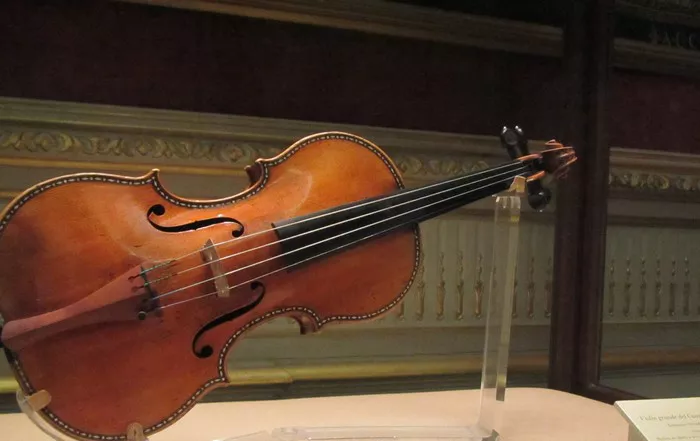When it comes to the realm of music, few instruments carry the same level of enchantment and sophistication as the violin. Its ethereal melodies and soul-stirring harmonies have resonated across generations, captivating audiences worldwide. Behind the scenes, the choice of violin can significantly impact a musician’s performance, particularly for professionals who demand the utmost quality and precision. In this article, we’ll unravel the world of professional violin usage, shedding light on the instruments favored by virtuosos and the factors that drive their choices.
Delving into Professional Violin Selection
Professionals understand that the right violin is more than a mere instrument; it’s an extension of their artistic expression. To achieve the desired tonal richness and resonance, professionals embark on a quest to find the perfect violin.
Factors such as the violin’s age, craftsmanship, and tonewoods used in its construction play a pivotal role in determining its sound profile. Violins from renowned luthiers often carry a premium due to their meticulous craftsmanship and historical significance.
The Stradivarius and Guarneri violins, crafted by the masters Antonio Stradivari and Giuseppe Guarneri del Gesù, respectively, are revered as some of the finest violins in existence. These instruments are not only coveted for their superior tonal qualities but also for their historical provenance, contributing to their astronomical value.
Tonewood Tales: How Wood Influences Professional Violin Selection
The choice of tonewoods used in a violin’s construction profoundly influences its sound. Spruce is often selected for the top plate due to its ability to resonate effectively, producing clear and vibrant tones.
Maple, on the other hand, is commonly used for the back, sides, and neck of the violin. Its dense and reflective nature contributes to projecting the sound outward, ensuring the violin’s voice carries effortlessly through concert halls.
Professionals are known to prefer aged tonewoods as they tend to enhance the instrument’s resonance and mature its sound over time. The combination of precise craftsmanship and exceptional woodwork is the hallmark of a violin that professionals cherish.
Stradivarius vs. Modern Creations: A Clash of Traditions and Innovation
Stradivarius violins, crafted in the late 17th and early 18th centuries, are revered for their unparalleled sound quality and historical significance. These instruments have become icons, fetching astronomical prices at auctions.
Modern luthiers, however, have not shied away from innovation. With advancements in technology and a deeper understanding of acoustics, contemporary violin makers have managed to replicate and sometimes even surpass the tonal qualities of the Stradivarius violins.
Professionals often find themselves at a crossroads, torn between the allure of tradition and the possibilities presented by modern craftsmanship. Many opt for a delicate balance, selecting instruments that pay homage to tradition while embracing modern refinements.
Crafting Sound: The Role of Setup and Accessories in Professional Violin Performance
Beyond the violin itself, the setup and accessories used play a pivotal role in achieving optimal performance. Professionals often work closely with luthiers to tailor their instruments to their playing style and preferences.
The bridge, tailpiece, and strings are meticulously chosen and adjusted to enhance the violin’s tonal qualities and playability. The subtlest modifications can lead to significant changes in the instrument’s sound projection and responsiveness.
Accessories such as high-quality rosin, chin rests, and shoulder rests also contribute to the overall playing experience. Professionals understand that every component, no matter how small, can have a profound impact on their performance.
Evolving Preferences and Musical Exploration
The world of music is dynamic, and so are the preferences of professional musicians. As artists grow and evolve, their musical tastes and playing styles may change, leading them to explore different violins that resonate with their current creative pursuits.
Professionals often form deep connections with their instruments, considering them as partners in their musical journey. However, this connection doesn’t deter them from seeking new horizons and experimenting with different violins to broaden their artistic palette.
Ultimately, the choice of violin remains a deeply personal decision for professionals—one that encompasses their artistic vision, technical requirements, and the emotional connection they share with their instruments.
Conclusion
In the enchanting world of music, professional violinists stand as paragons of excellence, each note they produce a testament to their dedication and mastery. The violins they choose are more than instruments; they are vessels of emotion and conduits of their artistic expression. From the age-old allure of Stradivarius to the innovative marvels of modern craftsmanship, the journey of selecting a professional violin is a harmonious blend of tradition, innovation, and the pursuit of sonic perfection. As musicians continue to shape melodies that touch the soul, their choice of violin remains a resounding echo of their passion and commitment to the art.


